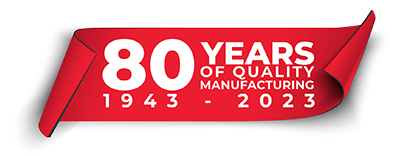Tensioners
Tensioners are useful additions to a drive design to deal with issues such as the fit of a belt or center distances between components. The purpose of a tensioner is to take up slack in a belt and maintain the tension of the belt so it doesn’t slip against the pulleys while under load. Tensioners allow a designer to use a stock belt that may be slightly longer than what is required rather than pay for tooling a custom belt. Tensioners also adjust for tolerances in a drive system and can make installation and servicing of belts easier. A tensioner used as an idler in a design can enable an engineer to make sharp turns in a belt layout with the tensioner keeping proper tension in the belt and insuring that the belt doesn’t slip against a pulley due to the sharp changes in belt direction. Not every drive requires a tensioner, but a tensioner is often useful to improve drive performance in actual use.
There are two basic designs for tensioners. Slotted tensioners move ‘in and out’ along a straight line, or slot, against the belt. A pivoting tensioner has a fixed pivot point and moves in an arc against the belt. The most common example of a pivoting tensioner is the one used on a car engine to tension the serpentine belt that drives all the accessories. Both types contain an idler at their ends which makes the actual contact with the belt and rotates to keep up with the belt so that there is no relative motion between their surfaces.
Tensioners can be either static (fixed) or dynamic (moving) in operation. A static tensioner means that the tension is set and the tensioner fastened into place to keep that specific tension against the belt during drive system operation. A dynamic tensioner uses some sort of a spring device to provide a known counterforce to push the tensioner into the belt to tension the belt.
The spring used in the tensioner design means the tensioner has the ability to move as the belt tension increases or decreases, making a dynamic tensioner an excellent choice for drives that do not have constant loads.
Tensioners can be placed either inside or outside of the belt, and on any span of a belt drive. It is generally better to place the tensioner on the belt span with the least tension (the slack span on a 2-pt drive). If the tensioner is going to put a lot of deflection on the belt then try to put it on the inside / tooth side of the design, as belts are manufactured to be shaped more easily from the inside, like they would be when going around a pulley. The idlers on inside tensioners should have the same profile as the belt they are pushing against. Outside tensioners are flat like the outside of the belt. They are useful to increase belt wrap around a pulley and are generally quieter, especially on high speed applications. Tensioners or idlers can also be used to change the belt direction and the design layout to get around obstacles that would otherwise interfere with a drive belt. In this case, a tensioner is actually functioning as an idler. By design, an idler has only one fixed position against a belt while a tensioner can be mounted through a range of positions relative to the belt.
Tensioners can be individually designed by a drive engineer or they can be purchased as preassembled components. York Industries has a line of stainless steel, small tensioners ideal for use in small synchronous drive systems. These complete tensioners can be ordered from stock in a number of pulley diameters, profiles, and heights above the mounting surface.
CONFIGURE YOUR OWN TENSIONER
Why spend time designing, researching components, and specifying tensioning devices when you can do it all in seconds at www.york-ind.com? Using our exclusive online tool you can configure any of our universal tensioners to fit your design perfectly, download CAD drawings, and even request a free quote. The line includes four styles of tensioners in two sizes each. They offer small footprints and extremely low belt clearance. York's easy-to-use, menu-driven configuration tool walks you through the process of designing a custom tensioner for your drive.





